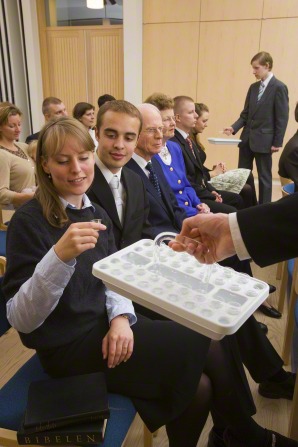This week’s topic is a very sensitive one, and probably
something most of us have a hard time speaking about. I know that I didn’t ask
very many questions growing up or even when I was making plans to get married.
The only preparation I remember making was having a doctor appointment making
sure I was physically healthy. I also read “Between Husband and Wife: Gospel
Perspective on Marital Intimacy” by Douglas E. Brinley and Stephen E. Lamb. I
truly don’t think anything really sunk in, because I was too embarrassed and
naïve to allow myself to learn that this was something important.
 |
| Intimacy is not something to be embarrassed about |
President Hugh B. Brown said, “Thousands of young people
come to the marriage altar almost illiterate insofar as this basic and
fundamental function is concerned. The sex instinct is not something which we
need to fear or be ashamed of. It is God-given and has a high and holy purpose.
. . . We want our young people to know that sex is not an unmentionable human
misfortune, and certainly it should not be regarded as a sordid but necessary
part of marriage. There is no excuse for approaching this most intimate
relationship in life without true knowledge of its meaning and its high purpose”
(Hugh B. Brown, You and Your Marriage, Bookcraft, 1960, pp. 73, 76).
 |
| Intimacy is fun, comforting, romantic, and spiritual. |
I was one of those illiterate young adults, feeling too
embarrassed to talk. Sean E. Brotherson wrote an article for Miridian Magazine,
“Fulfilling the Sexual Stewardship in Marriage,” in which he told how he was
preparing to get married and realized he only had a basic understanding of
marital intimacy. He turned to his mother and asked “what that experience was
really supposed to be like. My mother laughed and said that sometimes it was fun, sometimes it was
comforting, sometimes it was romantic, sometimes it was spiritual, and sometimes
it was just a willingness to love. I still think that's about the best
answer I've ever heard on that question” (2003).

It is okay to ask someone you trust answers to these
questions. It is especially important for us to turn to our spouse after we are
married and freely talk to each other about this aspect of marriage. Marital
intimacy is a unifying aspect of marriage. Just as Sean Brotherson’s mother
taught. Intimacy is fun, comforting, romantic, spiritual, and a way for full
expression of love. It is way to bind a husband and wife’s hearts together as
one.

This intimacy between husband and wife is good, and even
though we need to be careful to only talk about it in respectful ways it is
good. We don’t speak openly about sacred experiences, because that would
diminish its special-ness, this too applies to intimacy. Elder Parley P. Pratt said,
“Our natural affections are planted in us by the Spirit of God, for a wise
purpose; and they are the very mainsprings of life and happiness—they are the
cement of all virtuous and heavenly society. The fact is, God made man, male
and female; he planted in their bosoms those affections which are calculated to
promote their happiness and union.” (Parker Pratt Robison, ed., Writings of
Parley Parker Pratt, Salt Lake City: Deseret News Press, 1952, pp. 52– 53.)

My purpose in sharing these thoughts is to help married
couples to feel more comfortable opening up with each other about their
intimate relationship. Be able to talk about how each one feels. To have
couples feel the way Sean Brotherson’s mother taught her son. If husband and
wife are striving to love and fulfill the needs of the other, they will feel
more love and unity toward one another.



















